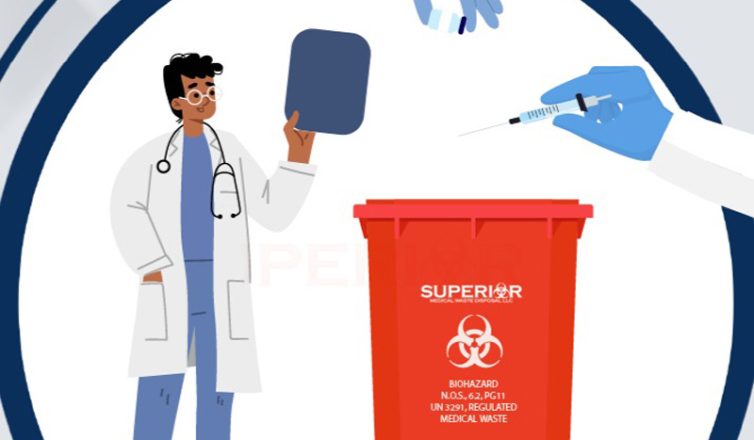Proper waste management is a crucial part of maintaining a safe and healthy environment. In particular, the disposal of hazardous waste is an important aspect of waste management. Hazardous waste is defined as any waste that poses a threat to human health or the environment. In this blog post, we will discuss the differences, risks, and storage options for three types of hazardous waste: biohazard waste, pharmaceutical waste, and trace chemo waste.
Biohazard Waste
Also known as medical waste or infectious waste, biohazard waste is any waste that contains infectious or potentially infectious materials. Examples of biohazard waste include blood, bodily fluids, tissues, and microbiological waste. Biohazard waste poses a significant risk to human health and the environment due to the potential for exposure to infectious agents.
Storage options for biohazard waste typically include red biohazard bags or containers, which are clearly marked with the biohazard symbol. These bags or containers should be kept in a designated storage area that is separate from other waste and inaccessible to the public.
Pharmaceutical waste
Pharmaceutical waste includes any unused, expired, or contaminated medication. Pharmaceutical waste can pose a risk to human health and the environment if not disposed of properly. When pharmaceutical waste is improperly disposed of, it can contaminate waterways and harm wildlife.
Storage options for pharmaceutical waste include blue or white containers that are clearly marked as pharmaceutical waste. These containers should be kept in a designated storage area that is separate from other waste and inaccessible to the public. In addition, pharmaceutical waste should be segregated by type (e.g. chemotherapy, controlled substances) to ensure proper disposal.
Trace chemo waste
Trace chemo waste is any waste that has come into contact with chemotherapy drugs. This can include gloves, gowns, and other protective equipment, as well as empty vials and IV bags. Trace chemo waste poses a risk to human health and the environment due to the potential for exposure to chemotherapy drugs.
Storage options for trace chemo waste typically include yellow containers that are clearly marked with the biohazard symbol and the words “trace chemotherapy waste.” These containers should be kept in a designated storage area that is separate from other waste and inaccessible to the public.
In addition to proper storage, it is important to properly dispose of all hazardous waste. Depending on the type of waste, disposal options may include incineration, autoclaving, or other specialized treatments. It is important to follow all local, state, and federal regulations for hazardous waste disposal to ensure the safety of the environment and public health.
In conclusion, proper management of hazardous waste is essential to maintain a safe and healthy environment. Biohazard waste, pharmaceutical waste, and trace chemo waste each have unique risks and require proper storage and disposal. By following all regulations and guidelines for hazardous waste disposal, we can help protect the environment and promote public health.
